Cabinet Upright, cocktail Genre Shoot 'em up | Initial release date November 1982 | |
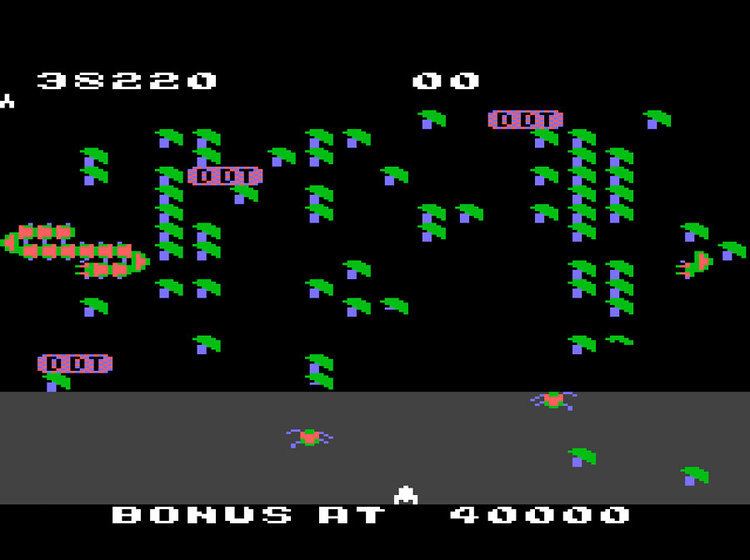 | ||
Mode(s) Up to 2 players, alternating turns CPU 1x MOS Technology 6502 @ 1.512 MHz Sound 2x Atari POKEY @ 1.512 MHz Display Raster, 240×256, vertical orientation, palette colors 32 Publishers Atari, Atari, Inc., HAL Laboratory, Topics Entertainment, Inc. Similar Ed Logg games, Shoot 'em up games | ||
Millipede is a 1982 arcade game by Atari, Inc. and is the sequel to the arcade hit, Centipede. The objective of the game is to score as many points as possible by destroying all segments of the millipede as it moves toward the bottom of the screen, as well as destroying and avoiding other enemies. The game is played with a trackball and a single fire button, which can be held down for rapid-fire. The game is over when the player's last life is lost.
Contents
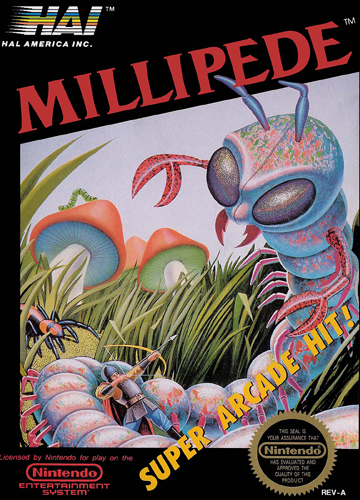
Millipede was ported to the Atari 2600, Atari 8-bit family, Atari ST, and later the Nintendo Entertainment System.
Gameplay
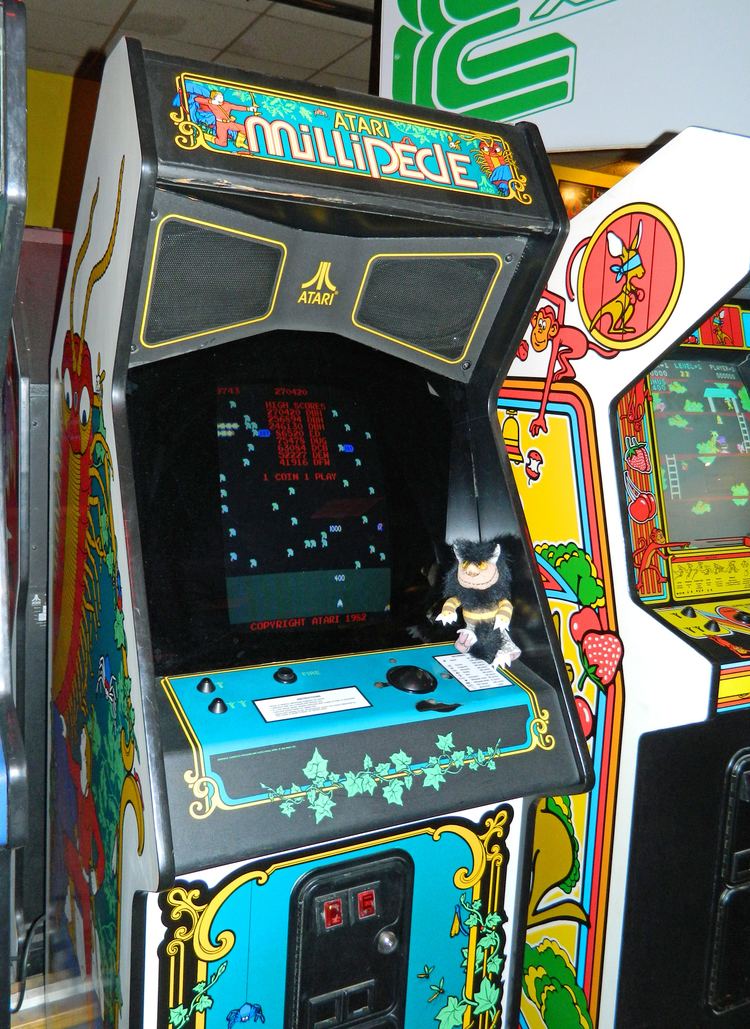
Similar to Centipede, the object of the game is to destroy a millipede that advances downward from the top of the screen. The millipede travels horizontally until it either hits an obstacle or reaches the edge of the screen, after which it drops one row and reverses direction. Once it enters the player's gray maneuvering area, it stays there and extra heads appear at intervals until both they and the millipede are destroyed. Shooting a body segment splits the millipede in two, with the rear portion sprouting its own head. A collision with any enemy costs the player one life.
New enemies and gameplay elements are introduced in Millipede:
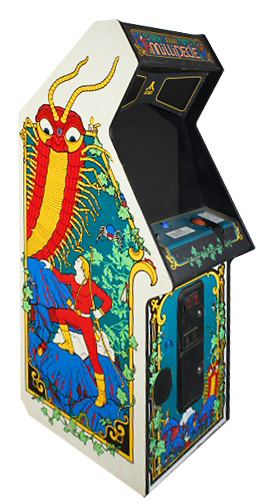
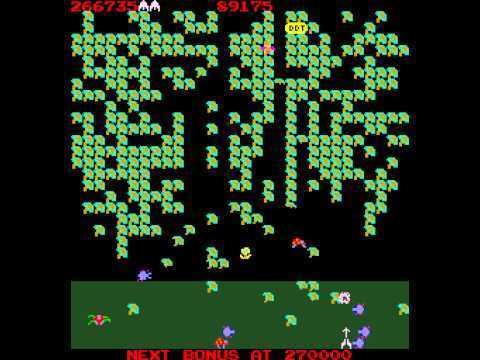
All flowers and poisoned/partially destroyed mushrooms revert to normal, whole mushrooms and score points during the process when the player loses a life.
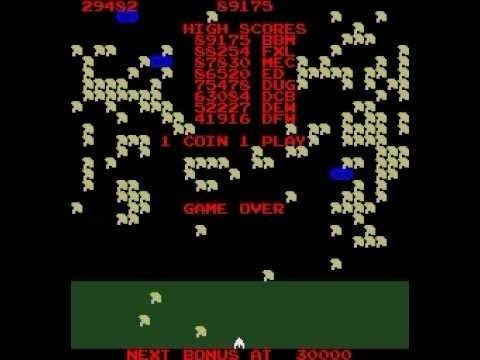
At regular intervals during the game, the player will face a swarm of enemies (bees, dragonflies, etc.) instead of the usual millipede. Each enemy destroyed awards increasing points, up to a maximum of 1,000 points per enemy; this attack ends when either the entire swarm has passed or the player loses a life. Also, at intervals new mushrooms will grow on the field while others die off, in a pattern similar to Conway's Game of Life.
Players can also choose at the start of the game whether to play at an advanced level, starting with a score that is a multiple of the number of points needed to earn an extra life (by default, 15,000). The gameplay is generally much more advanced than it would be had the player started with a score of 0 and worked their way up to that point level. The maximum advanced level allowed is a function of the preceding player's score, and games started at an advanced level where the player did not earn at least one extra life are not eligible for the high scoreboard.
Re-releases
A port for the Atari 5200, identical to the Atari 8-bit computer version, was ready in 1984, but was not published. A version for the Family Computer was developed and published by HAL Laboratory, renamed Milli-Pede, later named back to Millipede for its 1988 US release.
In 1995 Millipede was released together with Centipede on the Game Boy under the title Arcade Classic No. 2: Centipede / Millipede.
Both the arcade and Atari 2600 versions of the game were released as part of the Atari Anthology, released in 2004 for the Xbox and PlayStation 2. It was also released along with Centipede on the Xbox 360 via Xbox Live Arcade on May 2, 2007.
Highest scores
Donald Hayes, of New Hampshire, USA, scored a world record 10,627,331 points playing Millipede on December 26, 2004. Mr Hayes released a one and two DVD disc set documenting his high score. It was sold in limited quantities.
The highest Millipede score played under tournament settings is 495,126 points, also by Hayes.
In the default high-scores table of the arcade, the initials "FXL" and "ED" can be read. They refer to "Ed Logg" (designing and programming) and "Franz Lanzinger" (who helped a bit in designing and testing). They had to appear this way because in that time Atari didn't allow their programmers' full names to be in credits of the game
